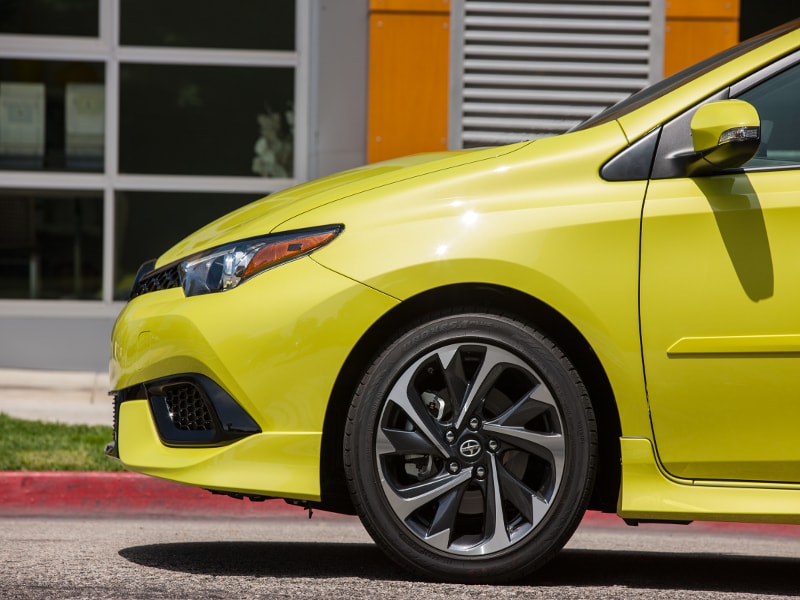Recent Articles
Popular Makes
Body Types
2016 Scion iM: First Drive Review
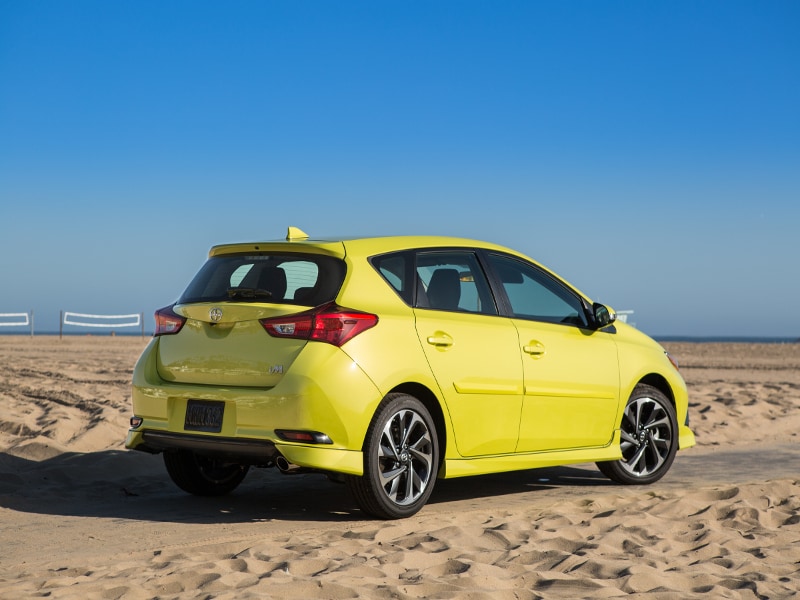
The 2016 Scion iM is evidence that one of the youngest car brands out there — and one aimed specifically at young drivers — is maturing gracefully. Here is a compact hatchback with a certain degree of class and sophistication, all at a keen price.
It’s based on a Toyota model sold elsewhere in the world as the Auris and shares platform parts with the Scion tC compact coupe. Scion has a worrying and confusing tendency to describe the iM as a subcompact, but calls the Ford Focus a rival. If it’s the size of a compact and competes with compacts, then it’s a compact — and should be evaluated as such.
Pricing
Getting into an iM starts at $19,255 (including $795 destination), which is seriously reasonable, especially when taking into account all the standard equipment. No need to spout a long list here, we’ll be mentioning them as we go along. But it’s worth noting that those handsome 17-inch alloy wheels seen in the beauty shots are part of the deal.
Scion doesn’t do trim levels as such, just a single set of specifications and then a few options on top of that. For example, choosing an automatic transmission means spending an extra $740.
Navigation is also optional. And part of Scion’s usual method is the opportunity for customers to, um, customize. To that end, an air filter, oil cap, lowering springs and anti-roll bars are available from Toyota Racing Development (TRD), and can be fitted at the dealership while still being covered by the new-car warranty.
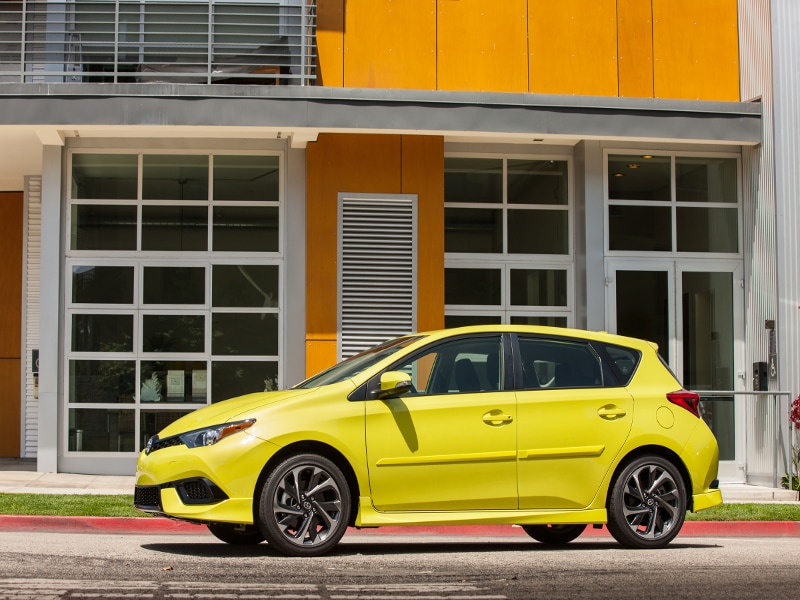
Design
The front end has somewhat generic styling; it looks related to the Toyota Corolla. But the rear has more of its own personality. Taken as a whole, the proportions are pleasing. The roof line dips gently toward a cool-shaped rear pillar. And the iM comes in some interesting colors, like Spring Green Metallic and Electric Storm Blue.
The interior is a departure from previous Scion cabins that, let’s be honest, usually had quite cheap materials. Here are nice shapes and textures, piano black and satin chrome interior accents, decent seat coverings, and an impressive seven-inch touchscreen for the Pioneer infotainment system.
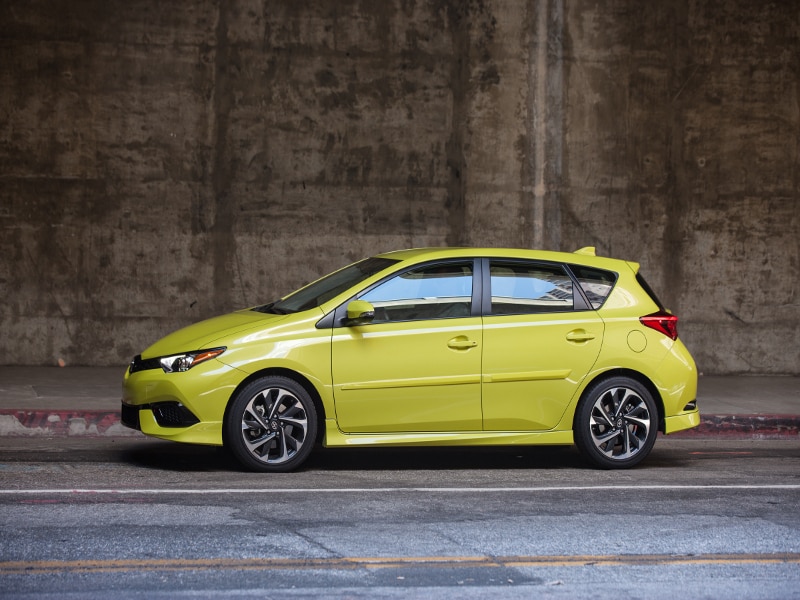
Comfort and Cargo
There are no downsides in this respect and certainly no subcompact-like restrictions. While the iM is not a limo, it still has space for occupants in the front and the back — at least up to and including the average adult male. The driver’s seat is easily adjusted and should be comfortable enough for most body types; the steering wheel tilts and telescopes for the ideal driving positioning. And no less than eight cupholders are sprinkled around the place.
A hatchback always offers greater practicality over a sedan and, in these dimensions, is arguably a better aesthetic choice as well. Trunk space with the rear seats up is a highly useful 20.8 cubic feet. Those rear seats split and fold in the usual 60/40 way for extra space when needed. Scion doesn’t have a maximum figure, but a Ford Focus hatch expands to about 45 cubic feet, so that’s a decent ballpark.
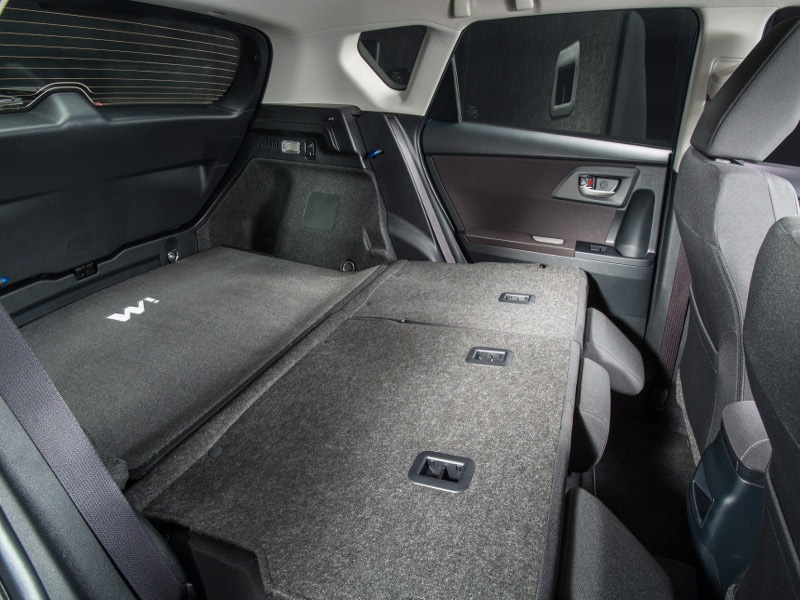
Features and Controls
Time to mention some of the standard comfort and convenience features — dual-zone climate control: power-folding and heated door mirrors; voice recognition for the Pioneer infotainment system and controls on the steering wheel for said system; Bluetooth phone connectivity. That’s some pretty high-end stuff for what is a competitively priced car.
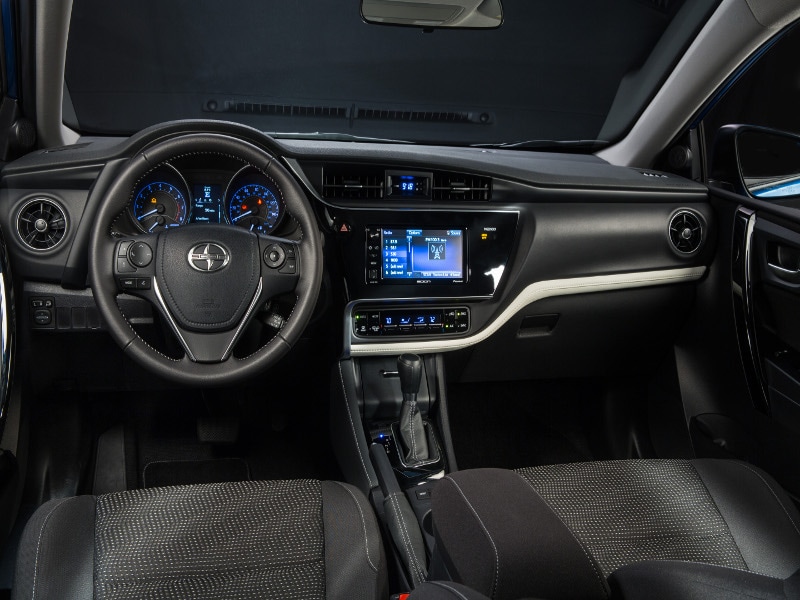
Safety
As well as the Smart Stop feature found in all cars from the Toyota company (including Lexus) that allows the brakes to override the throttle if both pedals have been pressed by mistake, the iM packs eight airbags — even one for the driver’s knees — disc brakes for the front and rear wheels alike, hill start assist, rearview camera, and LED daytime running lights.
The National Highway Traffic Safety Administration (NHTSA) and Insurance Institute of Highway Safety (IIHS) have yet to get their destructive hands on an iM, but the Auris (basically the same car) has performed well in European crash tests. So there’s every reason to think it will earn similar results over here.
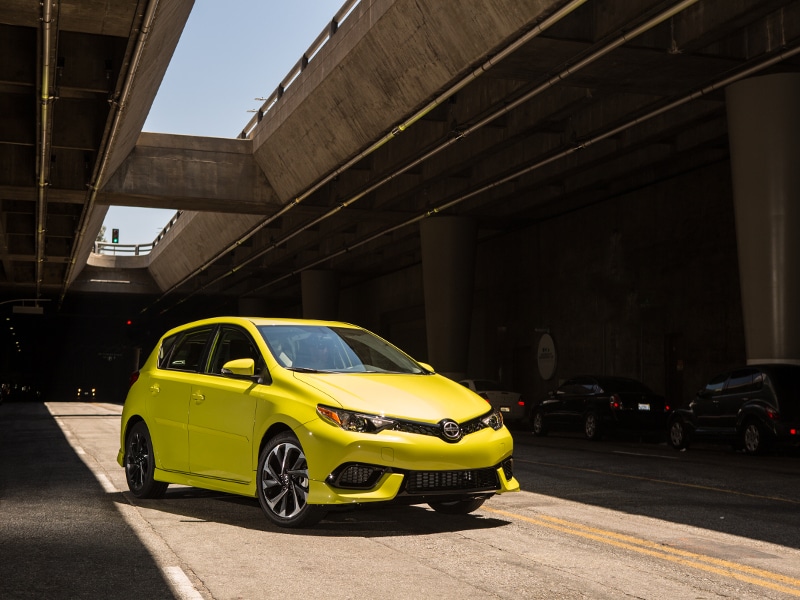
Engines and Economy
Just one engine: a 1.8-liter four-cylinder making 137 hp and 126 lb-ft of torque. This goes to the front wheels via a six-speed manual transmission (standard) or an optional CVT automatic. Since this engine is also found in the current Toyota Corolla (although the Corolla has slightly different output specs: 132 hp and 128 lb-ft), we can be confident that it’s supremely reliable and efficient.
Fuel consumption is rated by the EPA at 27 mpg city, 36 mpg highway, and 31 mpg combined for the manual transmission. The CVT improves matters with 28/37/32 mpg.
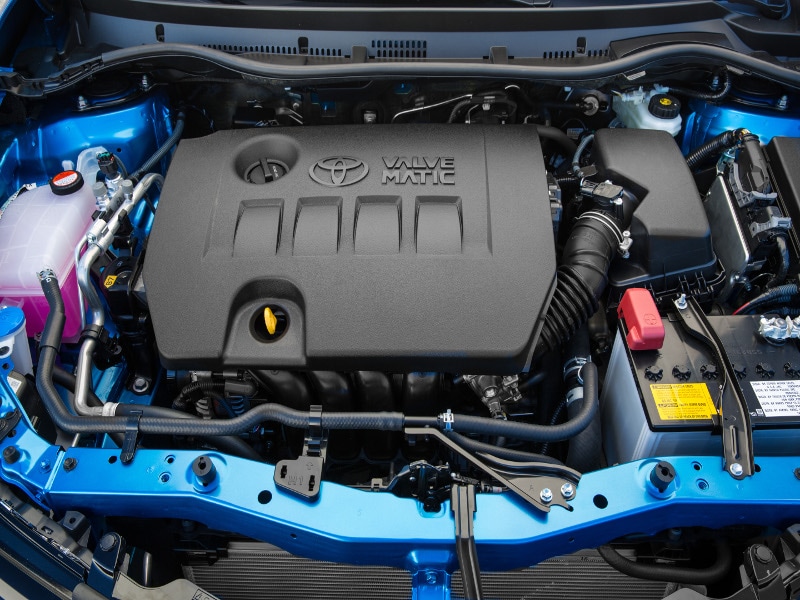
2016 Scion iM: First Drive Review - Performance
When rivals like the Ford Focus step up to the plate with 160 hp, then the iM’s 137 hp is not a lot of muscle. And it’s not as if the Focus is an over-endowed gas guzzler. In its basic form, it’s only a couple of miles per gallon away from the iM. Chances are some drivers will take that hit in return for a little punch and an entertaining chassis.
Left to its own devices, Toyota doesn’t really have the same kind of masterful grasp of suspension tuning as Ford or Mazda. Let’s omit the excellent Scion FR-S coupe from this argument because that’s a joint effort with Subaru, a company with years of motorsport experience and success.
So the iM makes decent rather than dynamic progress. For the daily commute, it’s sufficient but not particularly involving. Despite quite wide tires, the steering is still too light and too numb. But the car doesn’t even go far in favoring comfort over sportiness, bumps and thumps are still felt and heard in the cabin.
The continuously variable transmission (CVT) has seven “steps” pre-programmed into it that simulate conventional gears, plus a sport mode that holds onto each step a little longer to let the engine rev higher. That can sometimes get tiresome, so moving the lever over into manual mode is a good alternative. That way the driver can decide when to shift. The action is also fast and smooth.
The manual transmission operates perfectly well. However, the clutch engages near the top of the pedal’s travel. So there’s no need to press the pedal all the way to the floor. Just a little foible that’s easy to become familiar with.
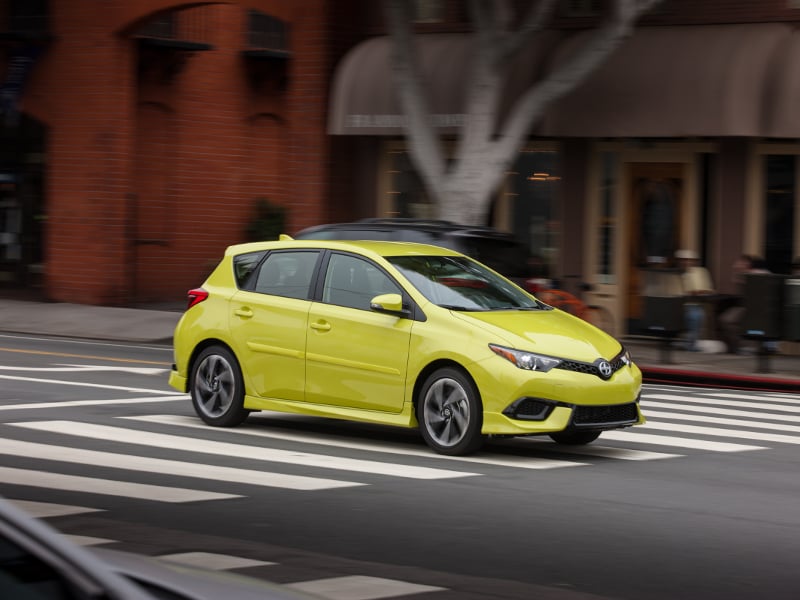
Final Thoughts
If equipment and economy are paramount, definitely consider the iM. As a complete package, it represents great value for money and anyone feeling a little short-changed in the power and engagement departments can still have a warm, fuzzy feeling when sitting on their fat wallet. But there are better, more complete compact cars out there. The Ford Focus, Mazda3 and Volkswagen Golf are the first that spring to mind.
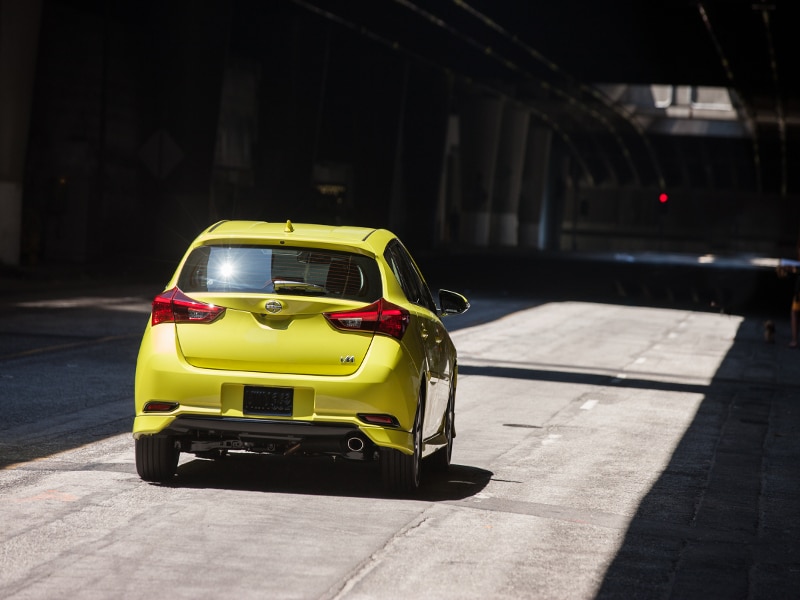
Pros and Cons
Pros:
When cash is king, the 2016 Scion iM rules. It’s also the most mature effort to come from Scion so far. Good choice of paint colors. Not just a character-free econobox. Useful space. Useful equipment and plenty of it for the price.
Cons:
Not a driver’s car by any stretch. Perhaps that’s the whole point.
